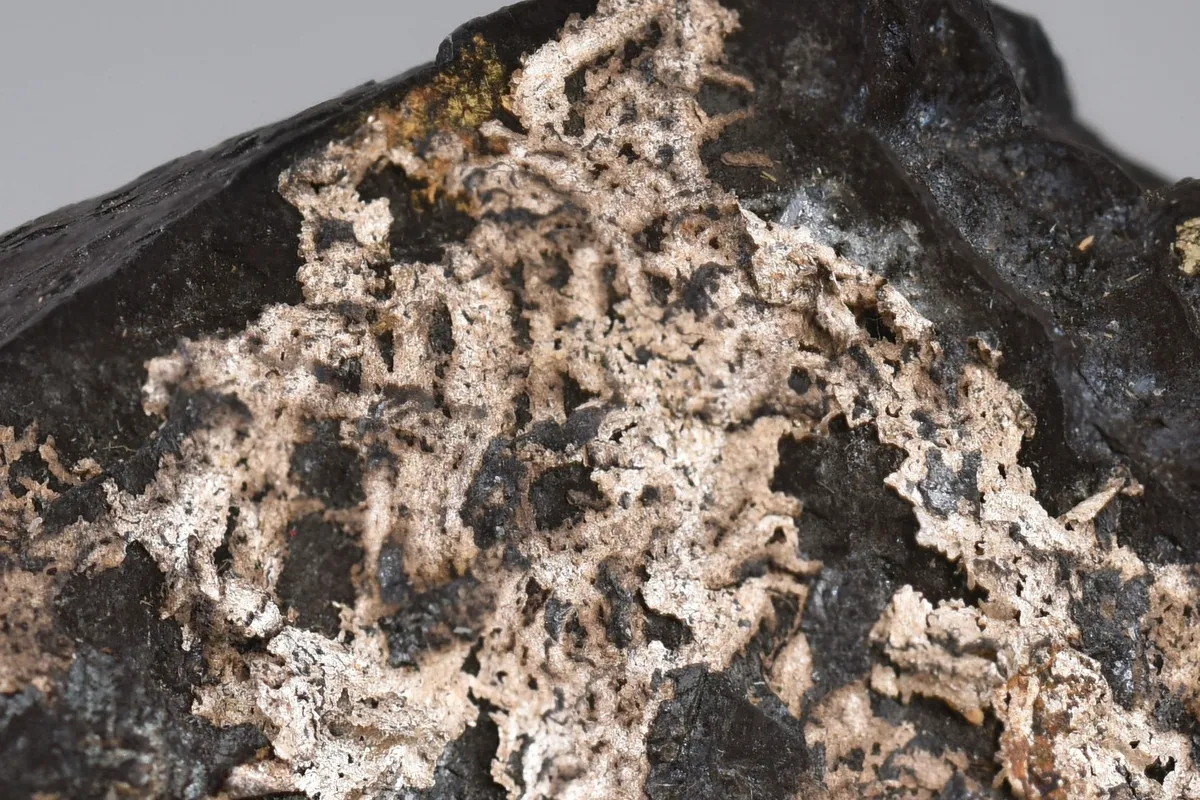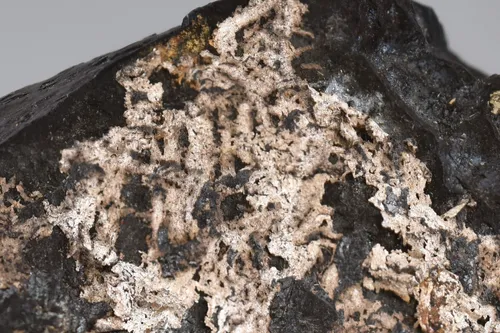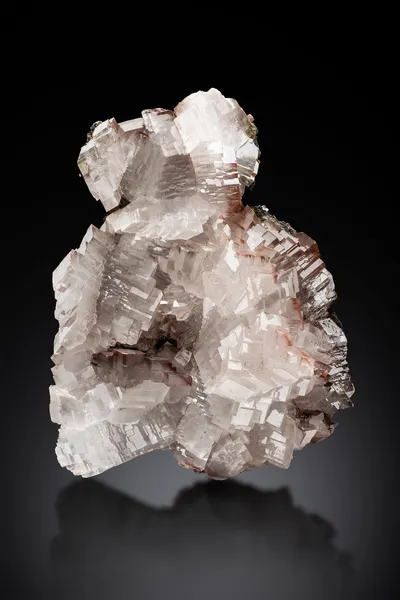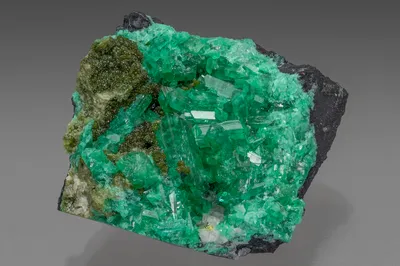
Image Credit: Malcolm Southwood
Mineral Species
Silver
Type Locality
No
Composition
Ag
Crystal System
Cubic
Status at Tsumeb
Confirmed
Abundance
Somewhat rare
Distribution
First, second and third oxidation zones; sulphide ores
Paragenesis
Supergene
Entry Number
Species; TSNB322
General Notes
Silver was a commercially significant by-product of the mining operations at Tsumeb. Kamona and Gunzel (2007) estimate that the original ore reserve included 30 million tonnes at an average silver grade of 125 g/t. Most of the contained silver, however, was in solid solution in sulphide minerals, with native silver accounting for only a very small proportion.
Klein (1938) recorded that native silver was found only below a depth of 160 m (6 Level), and that it became relatively abundant between 280 m and 400 m deep (i.e. from 10 Level down to 14 Level, which is essentially the lower limit of the first oxidation zone). Klein referred to this enrichment as "… the cementation zone" clearly interpreting it as supergene in origin. He described the native silver as very common in this part of the ore body, occurring on and in chalcocite.
The Klein Collection catalogue lists nine specimens of native silver, all associated with chalcocite; one of them (#1027) is from 12 Level while the others (#822 - #829) are all attributed to 11 Level (unpublished document, Klein family archive). One of the specimens from 11 Level, Klein #824, is conserved at Harvard University (MGMH 123023) and consists of leafy native silver on a parting in chalcocite ore with a little quartz and dolomite. Some tiny dendrites of what appears to be silver are present in the dolomite.
Bartelke (1976) added that silver had also been observed as a cementation layer on native copper "… in moss-like aggregates and crystals".
Pinch and Wilson (1977) observed that silver occurs "… disseminated as thin platelets and vein fillings associated also with bornite, digenite and tennantite".
Keller (1984) repeated the observations of Klein (1938) but added that silver forms dendritic growths with dolomite in "decomposition cavities" in sulphide ore.
Gebhard and Schlüter (1994) observed that in 1992, unusually silver-rich ore from 44 Level in the third oxidation zone was encountered, with an average grade of 153 g/t (compared with a more typical average value at that time of 100 g/t). Underground in situ, silver wires and plates could be seen in cuprite-rich ore and also associated with conichalcite, malachite, olivenite and zincolivenite. Particularly notable, however, were octahedral crystals of silver (exceptionally to 5 mm) with a distinctive yellowish tint which proved to be very resistant to tarnish. Microprobe analysis showed this silver to have a fairly constant mercury content of approximately 25 wt % and XRD indicated that the mercury amalgam was, at least in part, the mineral eugenite. Gebhard and Schlüter (1994) noted that the paragenesis of silver amalgam with secondary copper minerals in the third oxidation at Tsumeb appears to be unique. A black, porous variety of silver amalgam in the third oxidation zone was also noted. A re-analysis of silver specimens from the first oxidation zone, intriguingly, showed no significant presence of mercury.
Gebhard (1999) recorded that one specimen of silver from the second oxidation zone has a 2 cm long wire of silver in a cavity in chalcocite. He noted, however, that the best specimens of silver at Tsumeb were found in the third oxidation zone on levels 43 and 44. His description mirrors that of Gebhard and Schlüter (1994; see above) but added chenevixite and ferrilotharmeyerite to the list of associated minerals.
In 2020 native silver from Tsumeb was reported in association with iodargyrite and mckinstryite both identified by EDS but considered questionable here pending further information. (https://www.mindat.org/locentry-1415880.html; accessed January 2023).
Associated Minerals
acanthite; bornite; calcite; calvertite; chalcocite; chenevixite; chlorargyrite; conichalcite; cuprite; digenite; dolomite; dyscrasite (?); eugenite; ferrilotharmeyerite; gallobeudantite; iodargyrite (?); malachite; mckinstryite (?); olivenite; prosperite; quartz; renierite; stolzite; zincolivenite






